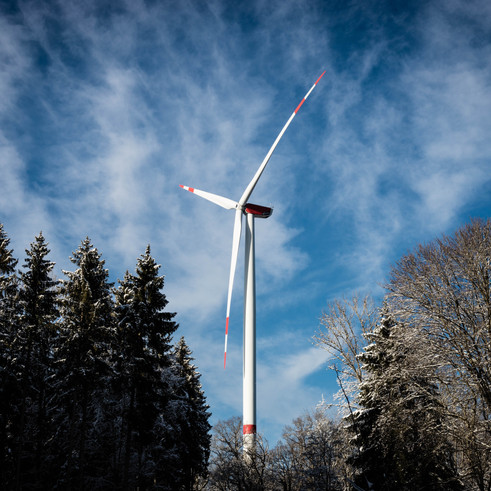What are Carbon Taxes?
A carbon tax is levied on the carbon emissions required to produce goods and services. They are intended to make visible the “hidden” social costs of carbon emissions, which are otherwise felt only in indirect ways like more severe weather events. The revenue generated from a carbon tax can be used to offset the environmental costs of carbon emissions. It can also be used to fund research and development of cleaner energy technologies and carbon offset projects.
Critics argue that they disproportionately impact low-income families and businesses, while doing little to actually reduce greenhouse gas emissions. They also point out that many of the projects funded by carbon offsets and credits may not be effective in reducing emissions. Supporters counter that they are a necessary step in addressing climate change, and that the revenue generated can be used to fund programs that will help those most impacted.
Greenhouse Gas Reductions
So does taxing carbon help mitigate climate change or not? There is a growing body of evidence that suggests carbon taxes can be effective in reducing greenhouse gas emissions. A 2018 study found that an increase of $50 per ton would reduce emissions by 2.5 percent in the United States by 2025. The study also found that the majority of the emissions reductions would come from the transportation sector, specifically from passenger vehicles and trucks.

A 2017 study found that a carbon tax of $30 per ton would result in a 4 to 5 percent reduction in U.S. emissions by 2030, and could generate up to $200 billion in revenue annually. This revenue could be used to offset the impact of the tax on low-income households or to fund other climate mitigation efforts.
So while there is still some debate on the efficacy of carbon taxes, there is a growing body of evidence that suggests they can be an effective tool in the fight against climate change.
Carbon Tax in Canada
In Canada, carbon taxes are levied at the provincial level and are in in place in the provinces of Alberta, British Columbia, and Saskatchewan, as of 2019.

In May 2019, the Canadian federal government announced its intention to implement a national carbon tax starting in 2020. It was imposed on provinces that do not have their own carbon pricing system in place. The tax will started at $20 per tonne of emissions in 2020 and increase by $10 per year until it reaches $50 per tonne in 2030.
The revenue generated by the federal carbon tax will be returned to the provinces where it is collected. Individuals will receive a rebate based on the amount of carbon tax paid, with the goal of ensuring that no household is worse off financially as a result of the tax.
The Canadian federal government has also said that it will provide funding to provinces and territories to help them transition to a low-carbon economy. This includes funding for energy efficiency programs, renewable energy projects, and public transit.
The United States
In the United States, there is no federal carbon tax, but a number of states have implemented their own carbon pricing systems. As of 2019, these states include California, Connecticut, Delaware, Massachusetts, Maryland, New Jersey, New York, Oregon, Rhode Island, and Vermont.
A number of cities in the United States have also implemented carbon taxes or fees. These include Boulder (Colorado), Chicago (Illinois), Washington D.C., and Philadelphia (Pennsylvania). The World Bank has estimated that there were over 40 carbon pricing initiatives in place around the world as of 2018. This includes carbon taxes, cap-and-trade systems, and other forms of pricing.
Carbon taxes are one of the most popular policy options for reducing greenhouse gas emissions. They are also one of the most effective. A carbon tax makes it more expensive to emit greenhouse gases, which gives people an incentive to reduce their emissions. They can also be used to fund other climate mitigation efforts, like renewable energy projects or energy efficiency programs.
Worldwide
They are also in place in a number of other countries around the world, including Chile, China, Denmark, Finland, France, Germany, Ireland, Italy, Japan, South Korea, Sweden, and the United Kingdom.
Carbon Offsets

Carbon offsetting is another way to reduce your carbon footprint. These are credits that can be purchased to offset your emissions. One primary type of carbon offset is a voluntary offset, which is purchased by an individual or company to offset their own emissions.
When businesses or individuals purchase carbon offsets or credits, they are essentially paying for the right to emit a certain amount of carbon dioxide into the atmosphere. The money paid for offsets and credits goes into projects that aim to reduce greenhouse gas emissions, such as planting trees or investing in renewable energy. In this way, buying offsets or credits can be seen as a way of offsetting one’s own carbon emissions.
Voluntary Carbon Offsets
Voluntary offsets are not regulated like compliance offsets, so it is important to make sure that you are purchasing offsets from a reputable source. There are a number of organizations that certify carbon offsets, including the Climate Action Reserve and the Verified Carbon Standard (Verra).
They can be used to offset any type of greenhouse gas emission, but the most common types are transportation-related emissions, like those from flying or driving. But how do they compare to carbon taxes?
Carbon Tax vs. Carbon Offsets
There are a few key differences between carbon taxes and carbon offsets. First, carbon taxes are levied on the emissions from a good or service, while carbon offsets are purchased on a compliance or voluntary basis to offset emissions. This means that such taxes are typically mandatory, while offsets are voluntary. Second, carbon taxes are paid by the emitting entity (usually a business), while carbon offsets are paid by the offsetting entity (usually an individual). And third, the revenue from carbon taxes goes to the government, while the revenue from carbon offsets goes to the offsetting organization or project.
Both have their pros and cons. Carbon taxes are sometimes more effective at immediately reducing emissions than carbon offsets, but they can also be more difficult to implement. Voluntary carbon offsets are voluntary, so there is no guarantee that they will be used. Carbon taxes can also be regressive, meaning that they disproportionately impact low- and middle-income households.

